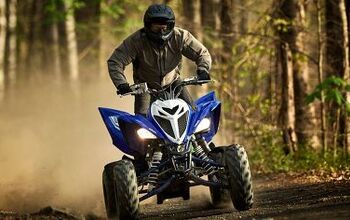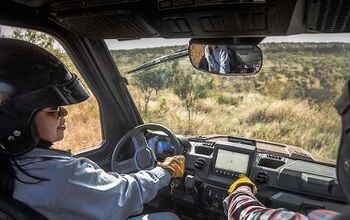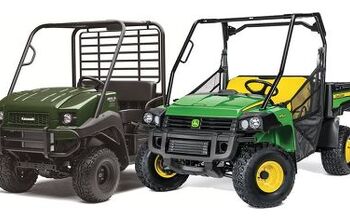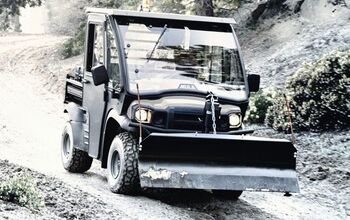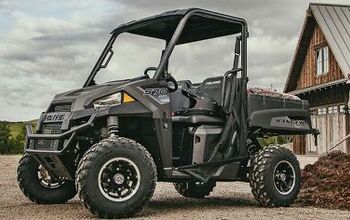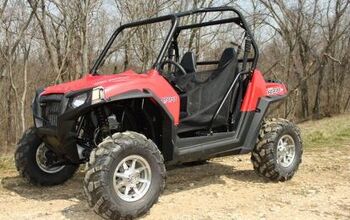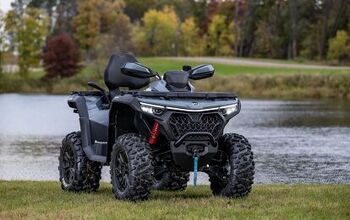What is 4WD and How Does It Work?

Four-wheel drive, commonly abbreviated as 4WD, is a vehicle drivetrain system that takes the power made by a combustion engine or electric motor and distributes the output to all four of a vehicle’s wheels simultaneously. This configuration is particularly useful for off-road driving, challenging terrain, and adverse weather conditions where additional traction is essential, and has become a commonplace, household term and piece of knowledge for those who own and/or operate any kind of motor vehicle. Understanding how 4WD operates involves exploring its components and functionality, and doing so can help ATV owners and riders best take advantage of their off-roading experiences.
Transfer Case
At the core of a 4WD system lies the transfer case. This component serves as the central hub for power distribution. The transfer case is positioned between the transmission and the front and rear axles, and its primary function is to divide engine power between the front and rear wheels, providing versatility and traction. A transfer case is one of, if not the, most vital parts that define a 4WD system. This piece of the puzzle houses the all-important low-range gears that can define how slowly a vehicle can crawl on the rocks or down a steep traverse.
Front, Rear, and Center Differentials
The next piece in the four-wheel-drive line after the driveshafts comes the differentials, or diffs. Diffs are gear assemblies that allow wheels on the same axle to rotate while receiving power from the driveshaft. Open, unlocked diffs enable smooth cornering while allowing the vehicle to shift power from side to side based on the traction control system and how much grip the vehicle allows each side to receive. Most ATVs have, or at least operate in, open/unlocked differential configurations as it causes less wear and tear on the drivetrain, makes cornering easier, and brings about less impact upon the terrain.
Locking differentials
However, locked or locking differentials are available on many four-wheelers and are especially common on 4WD utility machines. Locking differentials ensure equal power distribution to both wheels on an axle, even if one loses traction. This feature is crucial in extreme off-road situations. While the rear diffs tend to lock on their own or serve as inherently locked (especially in low range), front differentials usually remain unlocked when in 4WD. Machines like the Yamaha Grizzly 700 and Kawasaki Brute Force 750i offer the option for the rider to manually lock the front diff, which brings a substantial increase in front-end traction. Meanwhile, some ATVs like those from Can-Am and Polaris feature front differential systems that lock themselves automatically when slip and varying wheel speeds are detected between and across the front tires. This makes it easier for less experienced riders, but offers less control for more experienced riders.
Engaging 4WD
In most modern 4WD vehicles, especially the common four-wheel-drive ATV, the driver can select between two modes: 2WD (Two-Wheel Drive), where power is sent solely to the rear tires, and 4WD (Four-Wheel Drive), where it is rear-biased or distributed 50/50 front-to-back. Switching between drive modes is usually done by way of a switch, button, or other type of simple toggle. Typically, the drive mode is reflected on the display if the machine is equipped with one, or at least by a light indicating the front tires are being driven in addition to the rears.
Traction: Benefits and Limitations
The primary advantage of 4WD is improved traction. By powering all four wheels rather than just two, a 4WD vehicle can better navigate challenging terrains like mud, snow, gravel, or rocky surfaces. The increased traction minimizes wheel slippage, allowing the vehicle to maintain forward momentum. Think of climbing an extremely rock wall on your feet versus a dog doing so on all fours; the latter is more likely to make it up quicker, and happier to boot.
Turning and Maneuverability
However, using 4WD on smooth or high-traction surfaces when not necessary can cause binding issues. Because the front and rear wheels are receiving equal power, it becomes challenging for them to rotate at different speeds during turns. This can strain the drivetrain components and cause undue wear, with tight turns becoming especially difficult as the tires on each axle and across axles are fighting one another.
Does four-wheel-drive (4WD) differ from all-wheel-drive (AWD)?
It's essential to differentiate between 4WD and AWD, especially as different manufacturers call their systems one which may in reality be another. While both provide power to all wheels, AWD systems are typically more automatic and continuously engaged, or at least prepared to be so. They adjust power distribution based on traction requirements, with computers, sensors, or other systems doing the work. This is contrary to true 4WD systems which often require manual engagement and are more common in off-road vehicles. These systems rely heavily on user involvement, and the lapse in thought of switching between 2WD and 4WD can be the difference between making it over an obstacle or through a mud pit and not.
4WD is a versatile drivetrain system designed to provide enhanced traction and maneuverability in various driving conditions. Its components, including the transfer case, differentials, driveshafts, and locking mechanisms, work in unison to distribute engine power to all four wheels. This system is invaluable for off-road adventures, snowy conditions, and situations requiring increased traction.
However, it's crucial for drivers to understand when to engage 4WD to avoid unnecessary strain on the vehicle's components. Using 4WD on high-traction surfaces can cause drivetrain binding and lead to potential damage. Properly utilizing and understanding the capabilities of 4WD ensures a safer and more efficient driving experience, especially in adverse conditions.

Ross hosts The Off the Road Again Podcast. He has been in the off-road world since he was a kid riding in the back of his dad’s YJ Wrangler. He works in marketing by day and in his free time contributes to Hooniverse, AutoGuide, and ATV.com, and in the past has contributed to UTV Driver, ATV Rider, and Everyday Driver. Ross drives a 2018 Lexus GX460 that is an ongoing build project featured on multiple websites and the podcast and spends his free time working on and riding ATVs.
More by Ross Ballot





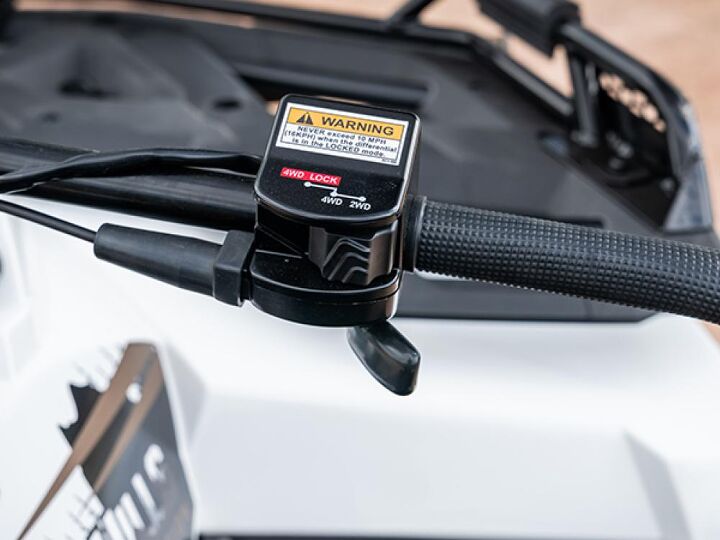









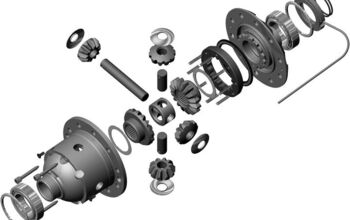
![Pedal Powered Side-by-Side [video]](https://cdn-fastly.atv.com/media/2022/10/24/8744132/pedal-powered-side-by-side-video.jpg?size=350x220)




